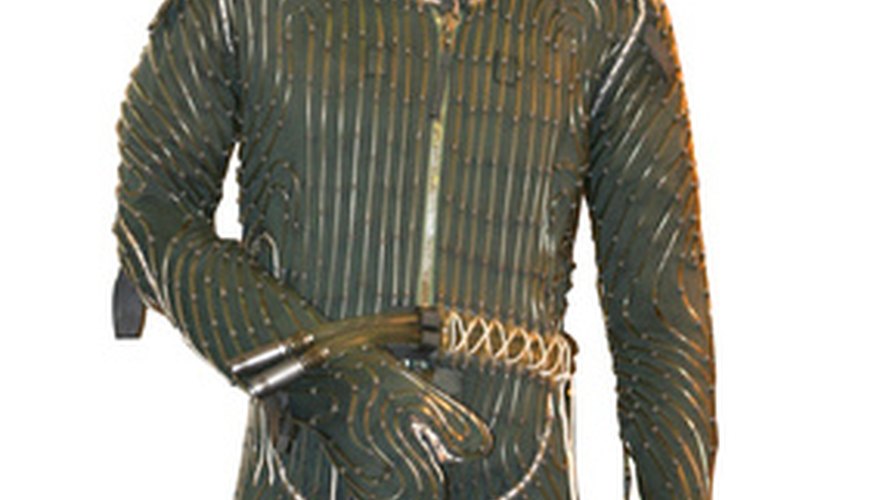The foam-like thickness of neoprene provides protection and insulation. Wet suits, mouse pads and protective cases benefit from neoprene's thermal protection and water resistance. Since neoprene consists of synthetic rubber cells, it must be treated for bonding agents and coatings to adhere to the surface of the material. Similarly, certain solvents and cleaning solutions may dissolve or weaken the synthetic material. Coatings include paint and decorations, which can flake as the materials stretches, unless covered by a protective coating. Cotol-240 and Aquaseal are commercially available at marine supply stores, hardware stores and dive shops for use on neoprene.
- The foam-like thickness of neoprene provides protection and insulation.
- Wet suits, mouse pads and protective cases benefit from neoprene's thermal protection and water resistance.
Cover your work surface with paper towels or a newspaper and place your neoprene project or fabric on top.
Prepare the surface of the neoprene for painting by applying a thin layer of Cotol to the surface with a small paint brush.
Wipe the treated surface with a clean cloth to dry.
Paint the desired pattern or design on the neoprene. If desired, place a stencil on the fabric and apply paint to the open areas of the stencil. Carefully remove the stencil and avoid smearing the paint.
- Prepare the surface of the neoprene for painting by applying a thin layer of Cotol to the surface with a small paint brush.
- Paint the desired pattern or design on the neoprene.
Set the neoprene aside in a well-ventilated area to dry. Drying time depends on the type of paint and amount of paint applied.
Touch a painted area gently and carefully to see whether the paint has completely dried or if it feels tacky, meaning that additional time to dry is needed.
Apply a second coat of paint, if the dried paint appears light or if you want to build a thicker layer of your design.
- Touch a painted area gently and carefully to see whether the paint has completely dried or if it feels tacky, meaning that additional time to dry is needed.
- Apply a second coat of paint, if the dried paint appears light or if you want to build a thicker layer of your design.
Dispense about a 1/2-inch line of Aquaseal from the tube onto a plastic plate and add 20 drops of Cotol. Mix thoroughly with a plastic spatula.
Apply a layer of the Aquaseal over the dried painted area using the glue brush. Be careful to apply a thin layer without smearing the painted design.
Apply a clear frame or outline of Aquaseal around the outer edges of your painted design and if desired, apply a coating of Aquaseal to non-painted gaps inside the design.
Set aside and allow to cure in a well-ventilated area overnight.
TIP
If creating a dimensional neoprene craft such as a can cosy or insulated beverage sleeve, first construct the item before attempting the painting process. Prepare small batches of the clear Aquaseal mixture because it dries quickly. Use nail polish remover or alcohol to clean Aquaseal from your hands.
WARNING
Before starting the painting project, brush a small amount of Cotol on a clean area of the neoprene for a colour-fast test to see whether it will discolour.
